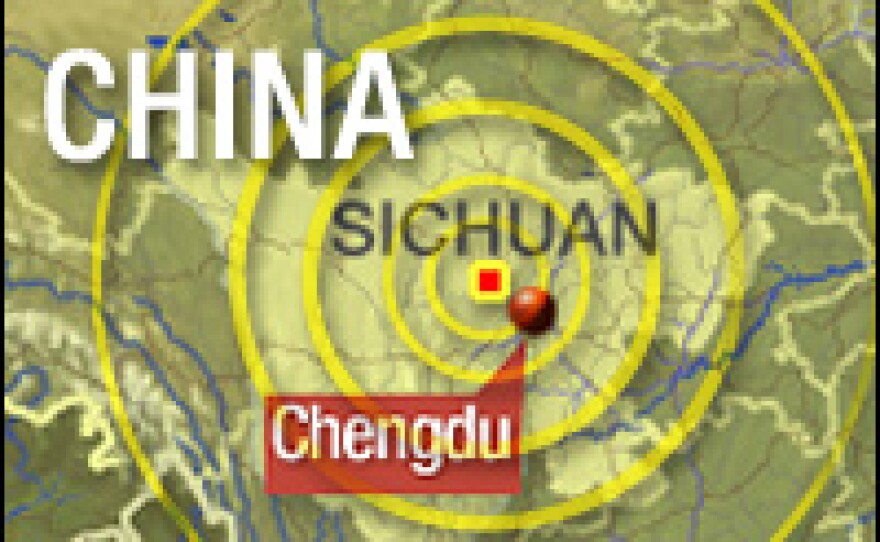
The death toll from Monday's earthquake in China's Sichuan province hit nearly 15,000 Wednesday and is almost certain to rise. The force of the massive temblor was comparable to that of the great San Francisco quake of 1906. Both were magnitude 7.9 events. Both tore open hundreds of miles of fault line. Both shook the ground for what felt like an eternity. And both toppled structures simply not built to sustain that amount of movement.
Seismologist Lucy Jones of the U.S. Geological Survey lives in California, but she used to live in Sichuan province near the scene of this week's quake.
The earthquake occurred along the Lung-men Shan fault. Much like California's San Andreas fault, it is the source of violent earthquakes, Jones says. But the comparison isn't perfect — movement along the San Andreas is caused by continental plates sliding past one another, while quakes on the Lung-men Shan fault zone are the result of a head-on collision.
"The big picture is that India is moving into Eurasia and doesn't stop," Jones says. "And the Himalayas have been pushed up and India still doesn't stop. So, actually, China is being squeezed out over the Pacific Ocean to make way for India to continue barreling north."
Every so often, the stress in the rocks becomes too much, and a fault slips. The deadly temblor in southwestern China was huge because, like the 1906 quake in San Francisco, a lot of the fault gave way at once.
"In this case, the fault is almost 200 miles long. And every point on that 200-mile-long fault is giving off energy," Jones explains. "It's one of the things we're trying to teach people here in California that when we have our big San Andreas earthquake, it's going to be very different — not because it's so much more intense shaking at any moment, but in large part because so much larger an area will be involved."
A Huge Number of People
Jones says the shaking in Monday's quake was not only widespread but painfully long.
"The bigger the earthquake, the longer it lasts," she explains. "And this earthquake probably had a duration ... maybe 70, 80 seconds."
Seismologists estimate potential damage using a shaking-intensity scale that goes from 1 to 10. Anything 8 or above is likely to create heavy damage.
"In this earthquake, there were almost a million and a half people exposed to either intensity 9 or 10. So there are just a huge number of people that are living right on top of really heavy levels of shaking," Jones says, explaining the reason for the extensive damage caused by the quake.
Structural Flaws
Even so, Chinese-born structural engineer Qiuhong Zhao was stunned by the death toll from the disaster and by images of its aftermath.
Zhao, an assistant professor at the University of Tennessee in Knoxville, says she has traveled often through Sichuan province. She says the Chinese government recognized the area had high earthquake potential and mandated fairly strict building codes. But that awareness didn't trickle down to the residents.
"You have you have the seismic zone there, but I think the people there ... earthquake [isn't] something that they will think of in everyday life," Zhao says. "It's not like in California, [where] you know about earthquakes, you talk about earthquakes all the time."
She expects that most of the damage in China will be to older buildings, constructed before the building code came into existence. Many structures that went up more than 30 or 40 years ago were simply made of brick and fare poorly in earthquakes.
Zhao says she hopes to go back to China to find out why so many buildings collapsed, and how to prevent tragedies like the one in Sichuan province.
Copyright 2022 NPR. To see more, visit https://www.npr.org. 9(MDAzMjM2NDYzMDEyMzc1Njk5NjAxNzY3OQ001))







